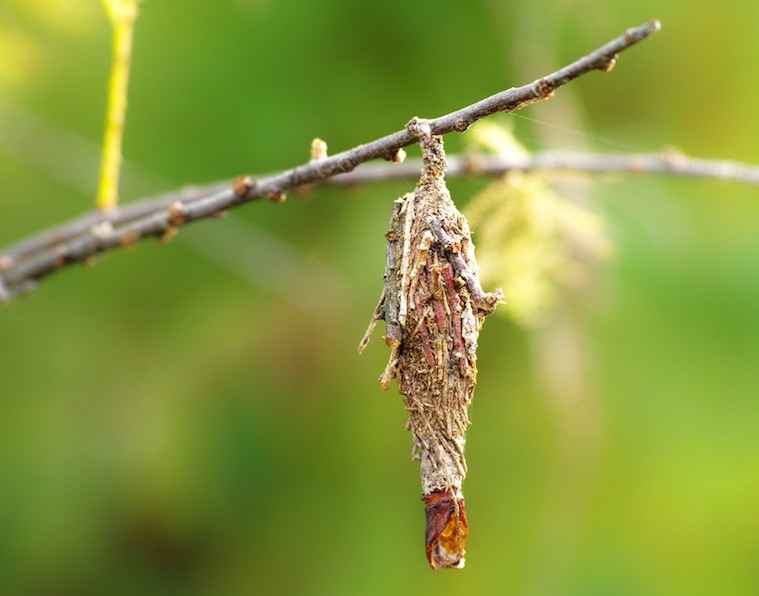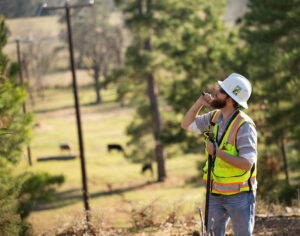The Basics of the Plant Health Care System

By Kevin Harrel
Attractive, graceful, majestic trees. Lovely, colorful, shapely shrubs. Low-maintenance spreading ground cover. A mature, healthy landscape that appeals to the eye and requires little in the way of maintenance. Pest management, in the traditional sense, is rarely needed. This, of course, is the ideal. The reality, though, is frequently quite different.
Traditional landscape pest management practices are frequently characterized by an over-dependence on pesticides, and an ignorance of pest life cycles. This over-dependence is driven by an economic model that doesn’t get paid unless something gets sprayed. As a result, mis-timed reactive spray programs are doomed to fail due to ignorance of pest life cycles and up-to-date pest control methods and practices. Among the unintended consequences of these traditional practices is a huge overuse of pesticides, wasting money and adversely affecting human health and the environment.
These concerns, dating back to the 1940s and ‘50s, gave birth to a great step forward in plant care: Integrated Pest Management (IPM). IPM is an approach that first assesses the pest situation, evaluates the merits of pest management options, and then implements a system of complementary management actions within a defined area. The goal of IPM is to mitigate pest damage while protecting human health, the environment and economic viability.
IPM has much to recommend. It is a significant improvement over the earlier management strategies, and has resulted in reduced and smarter use of pesticides and more effective pest control. But even IPM has a weakness. IPM as a strategy is pest focused — you can even detect this in the name. It is Integrated PEST management.

Plant Health Care (PHC) is a more refined approach that addresses this weakness. Instead of the pest, PHC is focused on the plant. More specifically, it is focused primarily on the health of the plant.
PHC is a holistic, comprehensive program to manage the health, structure and appearance of plants in the landscape. Holistic, meaning the PHC approach recognizes that plants exist as part of complex systems and communities, rather than as sole entities unaffected by the plant, soil and pest communities surrounding them. Comprehensive, in that PHC attempts to bias as many variables as possible in favoring the health of the plant. Some of these variables include plant selection, installation, companion plants, biological controls, and cultural practices.
Plant selection is the first step in establishing a successful PHC program. Successful selection must first consider the purpose of the plant. Are we planting for aesthetic reasons? Qualities such as flower, leaf shape, form, fall color should be considered. Are we planting for shade? Size and location are important. Privacy or sound break? Location matters, and do we want evergreen or deciduous? In addition to ensuring that the tree will serve the purpose that we desire, successful selection must also consider whether the plant will survive and thrive in the landscape. Site considerations such as, but not limited to, climate, soil type, sun/shade, drainage, planting space (both above and below ground!) must be thought out. Plant characteristics such as size, water needs, maintenance requirements, pest resistance/susceptibility, nuisance fruit and sun/shade requirements are also critical elements in choosing the right tree for the site. The most valuable information used in selection is the practitioner’s local knowledge of the success or failure of plants in the landscape. Frequently, some local pest that doesn’t pose a problem in most areas will have a foothold locally. The local practitioner will be aware of this issue and steer the selection away from that species or cultivar.
Although having a say in the plant selection is the PHC ideal, much more often the PHC practitioner is hired to manage an existing landscape. In this case, the practitioner will first do an inventory and assessment of the existing plants and their condition. A plan for preventive and remedial measures will then be implemented. Cultural measures, such as pruning, mulching and establishing a watering program will be performed and maintained.
The PHC plan will include a monitoring schedule, keyed to coincide with the emergence of anticipated pests. I’m defining a pest as an organism, whether disease or insect, that damages a desirable plant in a way that adversely affects its aesthetic qualities or it’s health. Monitoring is the primary activity of the PHC practitioner. The monitoring visit in a PHC program will require the practitioner to do a quick inspection of all the plants in the landscape, looking for unexpected problems, pests or damage. Closer attention is paid to the plants where emerging pests are more anticipated. For example, where I live, in southwest Missouri, bagworms hatch on average around mid-May. That means, in an average growing season, my PHC monitoring visits in mid-May will focus in on potential hosts for bagworms, among other things. Other times of the year are going to present other opportunities for pests, and the PHC monitoring schedule will specify the close inspection of those plants at those specific times for those anticipated pests. Mites, scale insects, fungus diseases, wilt diseases, sawflies, etc., will all have a predictable time at which they emerge, and so, there is a specific time for us to focus in on their hosts.
Even if our inspections reveal that the anticipated pest is present, we still may not act. Most pests, at low population levels, pose no threat to a healthy landscape and so no intervention is required. In fact, all normal landscapes have an existing pest population. Having said that, there are certainly some pests that require intervention at any population level, no matter how small. The key is understanding threshold populations of pests. This understanding requires an understanding of the pest, and communication with the owner or principal of the landscape. Some owners only want intervention if the life of a plant is in danger, other owners will not tolerate any damage to the appearance of the plant. The job of the PHC practitioner is to know at what pest population to intervene for each pest, host and landscape.
Keep in mind, though, that the primary goal of the PHC program is plant health, and controlling pests is only one aspect of plant health. Every monitoring visit will also look for signs of drought stress, over watering, nutrient deficiencies, deer or other animal damage and any abiotic problems or stressors that need to be addressed or at least noted at each visit. The practitioner’s job is also to communicate all concerns to the owner of the property.
As you can see, the implementation and operation of an effective Plant Health Care program requires sound knowledge of local plants, pests, weather, soils, and more. Attention to detail, communication skills, and an up-to-date understanding of good cultural practices and pest control methods are also key. Attaining the skills and knowledge to be a proficient PHC practitioner requires experience, education and integrity. All of this is paid back to the practitioner in attractive, healthy landscapes, satisfied clients, and the knowledge that you are doing the best that can be done for the landscape, your client, and the environment.
Kevin Harrel is a business development manager with ACRT covering ACRT’s western U.S. territory. He has extensive experience in tree care and planting, landscaping and landscape maintenance, and urban forestry. He can be reached at KHarrel@acrtinc.com.


